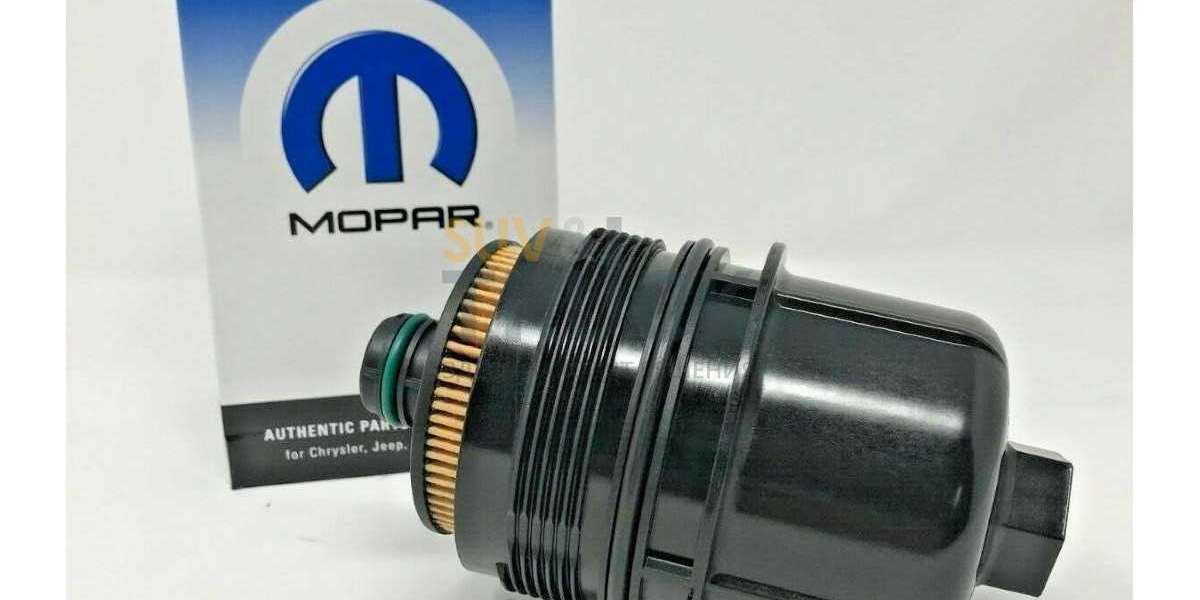Keeping your Ram 2500 6.7L Cummins diesel engine running at peak performance depends heavily on clean fuel. Over time, dirt, water, and other contaminants can build up in your fuel system. This is why replacing your fuel filter for Ram 2500 diesel at the recommended intervals is essential. A clogged filter can lead to reduced power, poor fuel economy, and even damage to the fuel pump or injectors.
In this guide, you’ll learn exactly how to change fuel filters on a Ram 2500 6.7L diesel—safely, efficiently, and without costly mistakes.
Why Fuel Filter Replacement Matters
Diesel engines are highly sensitive to fuel quality, making 68157291aa a critical component for maintaining performance and reliability. The high-pressure common rail system in the 6.7L Cummins relies on ultra-clean diesel for lubrication and performance. Even small particles can wear down injectors and the Bosch CP4 fuel pump. Replacing the fuel filters regularly:
- Protects expensive engine components
- Improves fuel efficiency
- Prevents no-start or stalling issues
- Reduces the risk of costly repairs
Most owners replace filters every 15,000 miles or once a year, but if you drive in dusty areas or use questionable fuel sources, you may need to change them sooner.
Understanding the Ram 2500 Fuel Filter System
Your Ram 2500 6.7L diesel has two fuel filters:
- Primary Filter – Located near the rear of the truck on the driver’s side frame rail. It removes larger debris and water.
- Secondary Filter – Located under the hood, on the engine. It captures finer particles before fuel reaches the injectors.
Both filters work together to ensure clean fuel delivery. Skipping one can cause uneven filtration and potential engine damage.
Tools Supplies You’ll Need
Before you start, gather the right tools:
- OEM Mopar fuel filters (primary and secondary)
- 28mm or 1-1/8" socket (for the engine filter cap)
- 29mm socket (for the frame-mounted filter)
- Ratchet wrench
- Drain pan
- Clean rags
- Diesel-safe gloves
- Torque wrench (optional but recommended)
Pro Tip: Always choose genuine Mopar fuel filters or high-quality equivalents. Poor-quality filters can collapse internally or fail to remove water effectively.
Step-by-Step: Changing the Fuel Filters
1. Prepare Your Work Area
Park your truck on a flat surface and engage the parking brake. Ensure the engine is cool before starting. Place a drain pan under the fuel filter housing to catch any diesel spillage.
2. Replace the Primary Filter (Frame-Mounted)
- Locate the primary filter on the driver’s side frame rail.
- Use the correct socket to loosen the filter canister.
- Drain fuel into the pan, then remove the filter element.
- Install the new filter, ensuring the O-ring is lubricated with clean diesel.
- Tighten the housing securely but avoid over-torquing.
3. Replace the Secondary Filter (Engine Bay)
- Open the hood and locate the secondary filter housing near the front passenger side.
- Use a socket to remove the filter cap.
- Pull out the old filter and replace it with a new one.
- Lubricate the O-ring on the cap and reinstall it.
- Tighten the cap to factory specs.
4. Prime the Fuel System
After changing both filters, you must prime the fuel system to remove air. On newer Ram 2500s:
- Turn the ignition key to the "ON" position (without starting) for about 30 seconds.
- Repeat this step 3–4 times. This allows the lift pump to push fuel through the filters.
Warning: Starting the truck without priming can cause hard starts, stalling, or damage to the CP4 pump.
5. Check for Leaks
Start the engine and let it idle for a few minutes. Inspect both filter housings for fuel leaks. If you notice drips, shut off the engine and recheck O-ring seating.
Resetting the Fuel Filter Life Indicator
Your dashboard will likely display a “Fuel Filter Life” percentage. After replacing the filters:
- Turn the ignition to “ON” (engine off).
- Use the steering wheel controls to navigate to “Vehicle Info” → “Fuel Filter Life.”
- Hold the OK button until the life resets to 100%.
Failing to reset the indicator may cause warning lights or no-start issues.
Maintenance Tips for Longer Fuel System Life
- Always buy diesel from reputable stations.
- Drain the water separator periodically if your truck has a manual drain.
- Avoid running the tank low, as it increases the risk of pulling debris into the filters.
- Inspect the fuel lines and connections for wear during filter changes.
Final Thoughts
Changing fuel filters on your Ram 2500 6.7L diesel is a straightforward task that can save you hundreds in labor costs and protect your engine from premature wear. By following the right steps, using OEM-quality parts, and sticking to the recommended service intervals, you’ll keep your Cummins running strong for years.
FAQs
- How often should I change the fuel filters on a Ram 2500 6.7L diesel?
Typically every 15,000 miles or once a year, whichever comes first. More often if driving in harsh conditions. - Can I change only one filter instead of both?
It’s not recommended. Both filters are part of the same system and should be replaced together for balanced filtration. - What happens if I don’t prime the fuel system after changing filters?
You may experience hard starts, stalling, or damage to the high-pressure fuel pump. - Do aftermarket fuel filters work as well as Mopar filters?
Some do, but Mopar filters are designed to meet factory specifications and protect your engine best. - Is it okay to reuse O-rings from the old filters?
No. Always use new O-rings included with the replacement filters to prevent leaks.








